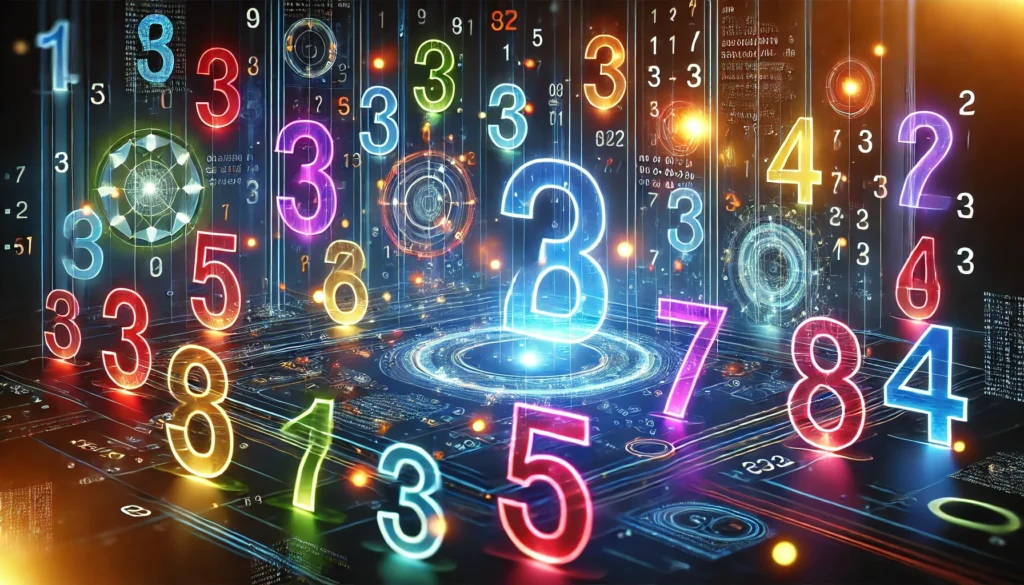Introduction
The knowledge of number system is one of the basic in digital electronics. Because computers, microcontrollers and digital devices process information in binary, number systems are concepts that all engineers and hobbyists should understand. In this blog, we will be discussing the four main number systems used in digital electronics such as binary, decimal, octal and hexadecimal, their conversion, different arithmetic operations and its applications.
What Are Number Systems?
We can say, the number system is a representation of numbers using a series of symbols or digits. All number systems have a base or radix that indicates the symbols used. For example:
- Binary (Base-2): Uses 0 and 1.
- Decimal (Base-10): Uses digits 0 to 9.
- Octal (Base-8): Uses digits 0 to 7.
- Hexadecimal (Base-16): Uses digits 0 to 9 and letters A to F.

Types of Number Systems in Digital Electronics
- Decimal Number System (Base-10)
- Symbols Used: 0, 1, 2, 3, 4, 5, 6, 7, 8, 9.
- Base: 10.
- Applications: Everyday arithmetic and human-readable formats
A number like 456in decimal means:
456=(4×10^2)+(5×10^1)+(6×10^0)
- Binary Number System (Base-2)
- Symbols Used: 0, 1.
- Base: 2.
- Applications: Used by digital circuits, as transistors in electronics operate in two states: ON (1) and OFF (0).
Example:
The binary number 1011 equals:
1011=(1×2^3)+(0×2^2)+(1×2^1)+(1×2^0)=11 in decimal.
- Octal Number System (Base-8)
- Symbols Used: 0, 1, 2, 3, 4, 5, 6, 7.
- Base: 8.
- Applications: Compact representation of binary data in digital systems.
Example:
The octal number 745means:
745=(7×8^2)+(4×8^1)+(5×8^0)=485 in decimal.
- Hexadecimal Number System (Base-16)
- Symbols Used: 0–9, A–F (where A=10, B=11, …, F=15).
- Base: 16.
- Applications: Memory addresses, color codes, and debugging in programming.
Example:
The hexadecimal number 1A3:
1A3=(1×16^2)+(10×16^1)+(3×16^0)=419 in decimal.
Importance of Number Systems in Digital Electronics
Number systems are important for digital electronics because they convert human-readable formats into machine-compatible representations. Binary System: Since digital circuits use the binary number system, there is data processing and communication. The efficiency in the binary systems is made even greater using octal and hexadecimal for easy representation of binary data. As such, knowing these systems is key when designing, debugging and optimizing digital circuits and algorithms.

Key Features of Number Systems
Positional Value
All number systems used in digital electronics are positional. This means the value of each digit depends on its position within the number. Positional value is a critical concept because it allows large numbers to be represented compactly and systematically, enabling efficient calculations and data storage.
Base or Radix
The base or radix of a number system defines the total number of unique symbols it uses. For instance, the binary system has a base of 2, while the decimal system has a base of 10. The choice of base influences the efficiency and readability of the number system in different applications.
Applications of Number Systems
Number systems are integral to various aspects of digital electronics and computing. Binary is the backbone of all digital circuits, from microprocessors to memory devices. Hexadecimal is commonly used in programming and debugging, as it simplifies the interpretation of binary data. Octal, though less prevalent, is still used in specific programming contexts and older systems. Understanding these applications helps engineers and programmers choose the appropriate number system for their tasks.

How Number Systems Simplify Digital Operations
The digital systems process huge volumes of data which becomes a little tedious to manage all things at binary level. And that is the magic of octal and hexadecimal systems. These systems help to read, interpret and debug the data by grouping binary digits together and converting them into more compact formats. So, for instance, one hexadecimal digit corresponds to four binary digits and drastically shortens the length of binary strings.
Transitioning Between Number Systems
This is one of the basic concepts we need to master in digital electronics, conversion between number systems. Although this may sound too complex, the actual mathematics is very straightforward, and these functions are used to explain how data is passed through different layers. This conversion allows the machine and humans to interact better, making sure that digital systems perform what they are built for.
Challenges in Understanding Number Systems
Number Systems can be intimidating for a beginner when we talk about conversions and the arithmetic operations. Again, the binary system specifically can seem a bit unnatural because it has so few symbols. Yet regularity of practice and real-life use cases can mitigate those issues, which ultimately means that whenever these obstacles are dismantled number systems become less abstract and easier to reason with.

Benefits of Learning Number Systems
Having good command over number systems helps you to make full use of opportunities in the field of electronics and computing. It helps with problem-solving, makes debugging better, and prepares for advance topics like microcontroller programming or digital systems design. It also cultivates a greater understanding for digital technology’s beauty and straight forwardness.
Modern Trends in Number Systems
With the advances in technology, number systems are increasingly playing diverse roles. Given number systems are important because they are still relevant when it comes to quantum computing, advanced level cryptography, and more. While there may be new emerging technologies that will represent and process data differently, the basic idea behind binary, octal and hexadecimal systems will likely stay the same as it is a foundation for whatever comes next.
Conclusion
Number Systems: The Language of Digital Electronics is a key concept that allows for efficient representation, processing and communication in digital systems. Each system has its use as binary progress into hexadecimal to reach the very compact result. These systems can open up new doors in engineering, programming, and more. Number systems knowledge is an investment in your own technical skill and creativity whether you are a student, hobbyist or professional.










